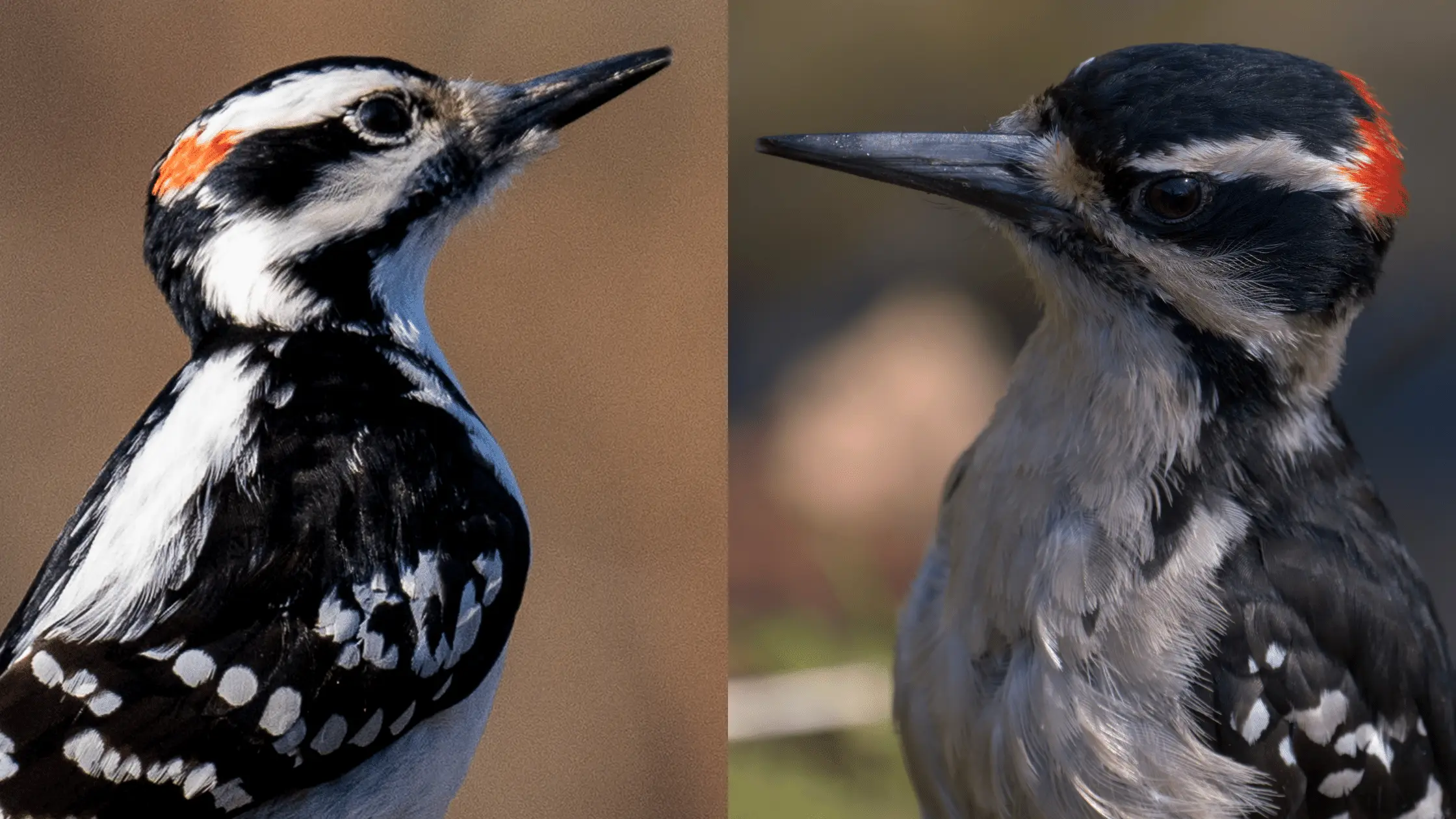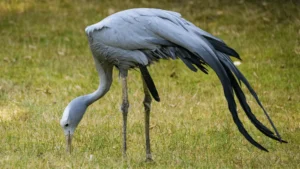I often pride myself on being an avid bird watcher, but with all my experience, some bird species still stop me in my tracks. Case in point; The hairy and downy Woodpeckers. These two birds are among the most common woodpecker species in the United States. However, they are so similar that you’d need to hold them side by side to tell the difference.
The best way to differentiate between the downy woodpecker and the hairy woodpecker is through careful observation. I’ve been able to hack the secret in identifying them; allow me to pass my knowledge on to you.
Hairy Vs. Downy Woodpecker: Size
Hairy woodpeckers are more prominent than their downy cousins. The hairy woodpecker is around 9 inches long, while the downy woodpecker measures about six and a half inches long. The downy woodpecker is six and a half inches long when measured from the tip of its beak to its tail end.
If you have ever seen a common house sparrow, then you have an idea of how a downy woodpecker looks in terms of size. And, if you have seen a robin, then you know the size of a hairy woodpecker.
Hairy Vs. Downy Woodpecker: Beak Size

The beak of the downy woodpecker is short compared to that of the hairy woodpecker. The beak of the hairy woodpecker is as long as the bird’s head. Also, the beak of the hairy woodpecker is very thick and looks like a dagger. The woodpecker’s beak is essential to its feeding characteristics.
The beak of the downy is short and stubby. Unlike the hairy woodpecker’s beak, which is as long as its head, the beak of the downy is about one-third the size of its head. This is one of the best ways I use to differentiate between these two birds.
Hairy Vs. Downy Woodpecker: Markings
The plumage in the hairy and downy woodpeckers are very similar. Other birds with identical plumage are the house finch and purple finch. However, even though these woodpecker cousins have identical plumage, some subtle differences can be seen.
The downy woodpecker’s outer tail has some spotting. The tail of the hairy woodpecker is plain. The shoulder of the downy woodpecker is plain, while that of the downy shows some black color. The black color of the downy woodpecker’s shoulder also spreads toward its breasts.
The female downy spots a white eyebrow stripe around its head, meeting up at the other side. The female hairy woodpecker has a similar stripe. However, the stripe does not go around its head.
Looking closely, you will also notice that downy woodpeckers have recognizable fluffy nasal tufts, while hairy woodpeckers do not. The feathers on the top of the beak are known as the nasal tufts.
The downside to identifying these woodpeckers using markings is that the colorings aren’t very obvious, and there may be geographical variations.
Hairy Vs. Downy Woodpecker: Habitat
The hairy and downy woodpecker both love to spend time at feeders. However, they don’t share the same preference in terms of habitat.
The downy woodpecker likes to live in the open forest with deciduous trees. They will also spend a lot of time along the brush edges of the forest. Don’t be surprised to spot the downy woodpecker in parks, gardens, and orchards because they like to spend their time in suburban areas.
On the other hand, the hairy woodpecker will spend most of its time in forests with deciduous and coniferous trees. Another bird that lives in the coniferous tree is the purple finch. They like to spend time in dense woodlands, but they aren’t beyond venturing into suburban areas. If you wish to see a hairy woodpecker, you need to know the best time to put out their feeders.
Additionally, downy woodpeckers like to live on the periphery of agricultural regions where they can forage on weed stalks. Such flimsy stems are insufficient for hairy woodpeckers to eat since they would bend beneath their weight.
You can also find the nesting cavity of these birds as a way of telling them apart. By looking at the cavity of their nest, you can know which of the woodpeckers are nesting on the spot. While hairy woodpeckers are more likely to nest in a larger cavity with an oval aperture, downy woodpeckers will have a small, round opening in the hollow.
Hairy Vs. Downy Woodpecker: Diet
The downy woodpecker feeds on tent caterpillars, apple bores, and corn earworms. Simply put, they like to eat insects. This is why you will often spot downy woodpeckers in orchards. They will feed on acorns and berries when they feel like adding variety to their meal.
The diet preferences of the hairy woodpecker are similar to that of a downy. Hairy woodpeckers love nothing more than feeding on the larvae of bark beetles. They also love the pupae inside moth cocoons.
If you stumble across a burnt forest, don’t be alarmed to see a flock of hairy woodpeckers, they are just there to feed on the beetles displaced by the burned trees.
Hairy Vs. Downy Woodpecker: Behavior
You must watch them closely to spot any behavior differences between these two birds. The downy woodpecker is quite a social bird. Just like a cat, they are also very curious. When they travel, they mix with other flocks of birds, such as chickadees. When they feed, they will cling to thin branches and weed stalks. The downy woodpeckers are small, so the thin branches don’t break under their weight.
Hairy woodpeckers are the opposite of their downy cousins in terms of behavior. The hairy woodpecker is solitary and shy. They will most likely fly away if you get too close while watching them. They are heavier than their downy cousins, so they’d hang on bigger and thicker branches when feeding.
Hairy Vs. Downy Woodpecker: Voice
Identifying birds by listening to their voice can be challenging even for the most experienced bird watcher. But, I assure you that when you learn to identify birds through their voices, you will have mastered the act of telling even the most similar bird species apart.
The call of the downy woodpecker is soft and less demanding. Their call will end on a high-pitched note towards the end. The hairy woodpecker boasts of having a stronger and louder call. The downy woodpecker’s call stays on one beat until the end.





